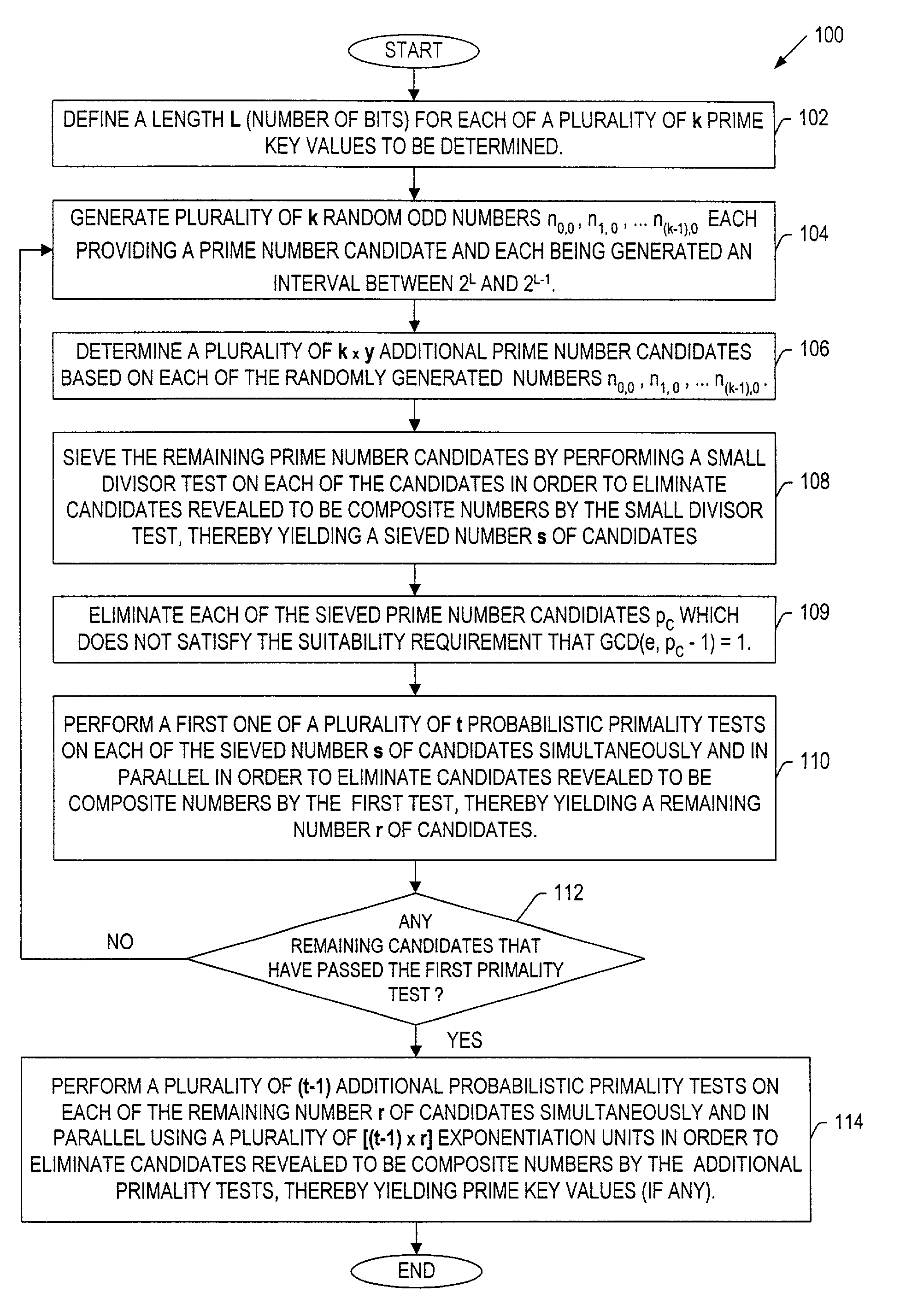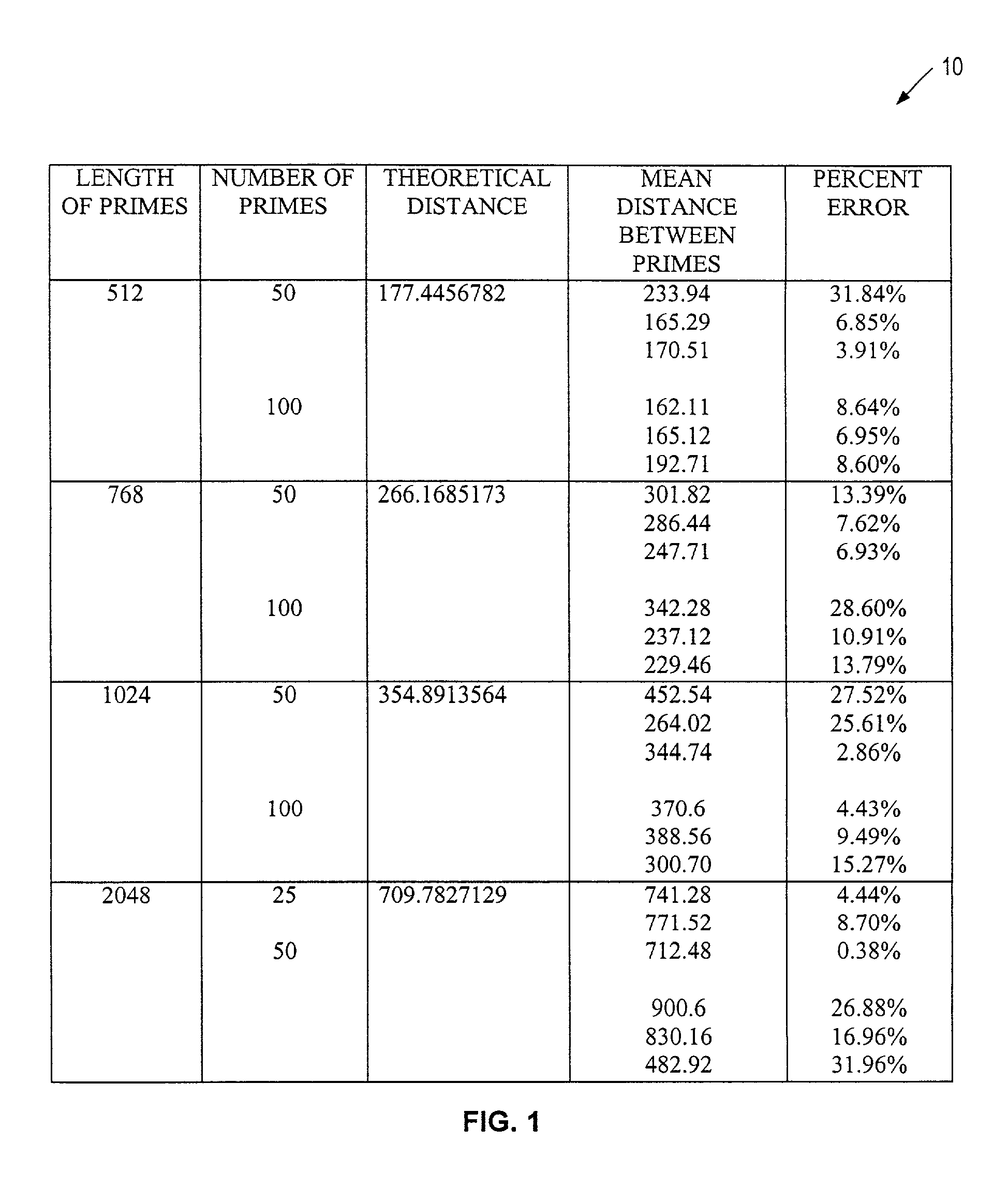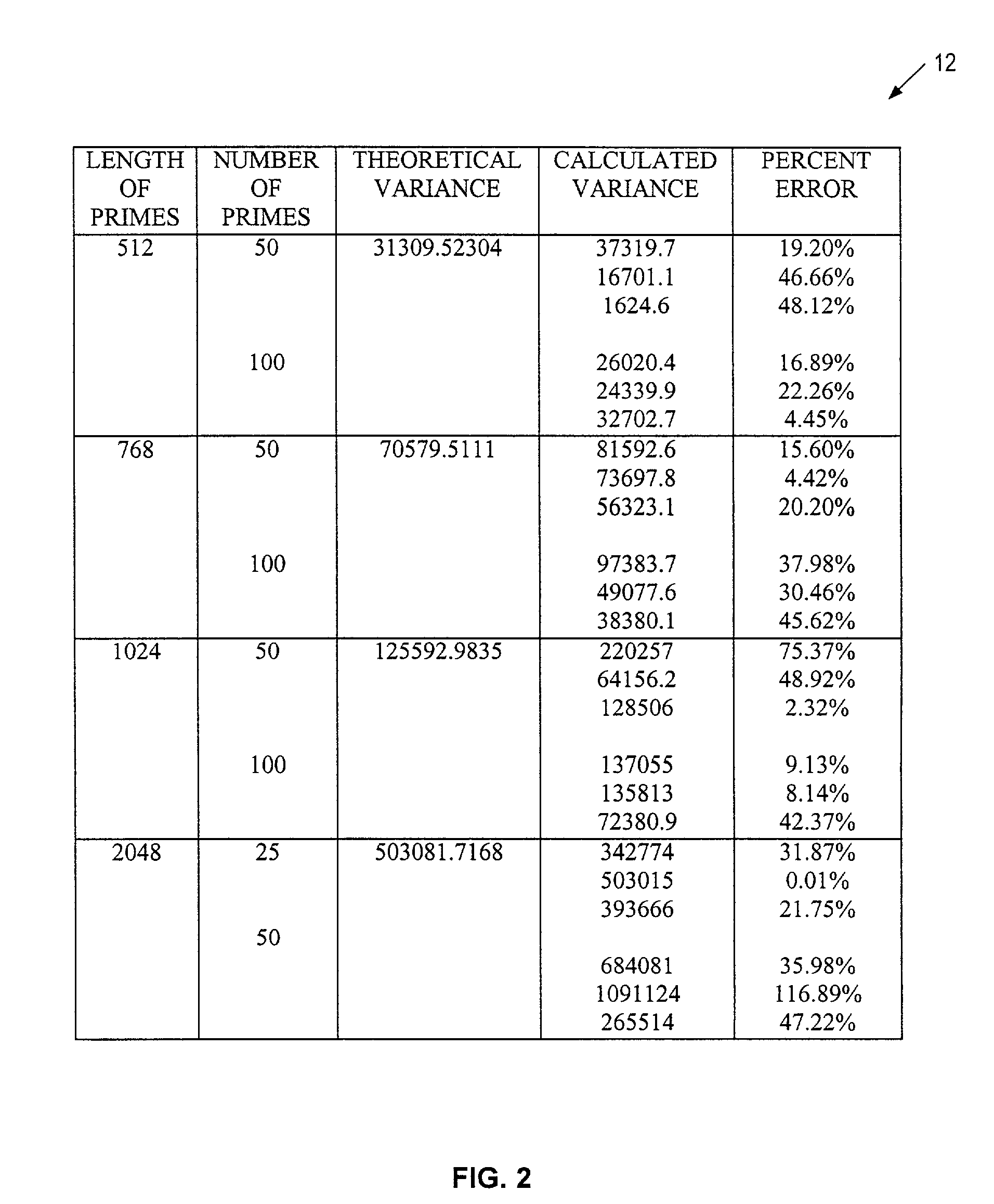Multiple prime number generation using a parallel prime number search algorithm
a prime number and search algorithm technology, applied in the field of prime number generation, can solve the problems of unrelenting attempts to break, computationally difficult to determine the private key from the public key, computationally difficult to factor the composite number n into its prime factors p and q, etc., to achieve fast and efficient probabilistic primality testing, fast and efficient searching, and reduce computational effort and time
- Summary
- Abstract
- Description
- Claims
- Application Information
AI Technical Summary
Benefits of technology
Problems solved by technology
Method used
Image
Examples
first embodiment
[0183]In the present invention, the parameters L, k, t, y, e, and CRA_TYPE are predetermined and stored in the system memory unit 60 (FIG. 6) along with computer readable instructions executable by the processing unit 52 (FIG. 6) for implementing a parallel prime number searching process wherein an array of (k×t×(y+1)) of the exponentiation units 56 (FIG. 6) are used to simultaneously execute a plurality of t probabilistic primality tests on each of k sets of (y+1) prime number candidates to yield cryptographic key values.
second embodiment
[0184]In the present invention, the parameters L, k, t, and y are selected by a user (or specified by a remote computing system that is not shown) and provided to the processing unit via the bus interface 62 (FIG. 6). In this embodiment, computer readable instructions stored in the system memory unit 60 (FIG. 6) and executable by the processing unit, provide for implementing an embodiment of the parallel prime number searching process wherein a user selected array of (k×t×(y+1)) of the exponentiation units 56 (FIG. 6) are used to simultaneously execute a plurality of t probabilistic primality tests on each of k sets of (y+1) prime number candidates to yield cryptographic key values.
[0185]FIG. 8 shows a flow diagram illustrating one embodiment of a parallel prime number searching process at 100 performed by the prime number generation system 50 (FIG. 6) in accordance with the present invention. The process 100 begins with a step 102 in which a length parameter L is defined for each o...
PUM
 Login to View More
Login to View More Abstract
Description
Claims
Application Information
 Login to View More
Login to View More - R&D
- Intellectual Property
- Life Sciences
- Materials
- Tech Scout
- Unparalleled Data Quality
- Higher Quality Content
- 60% Fewer Hallucinations
Browse by: Latest US Patents, China's latest patents, Technical Efficacy Thesaurus, Application Domain, Technology Topic, Popular Technical Reports.
© 2025 PatSnap. All rights reserved.Legal|Privacy policy|Modern Slavery Act Transparency Statement|Sitemap|About US| Contact US: help@patsnap.com



